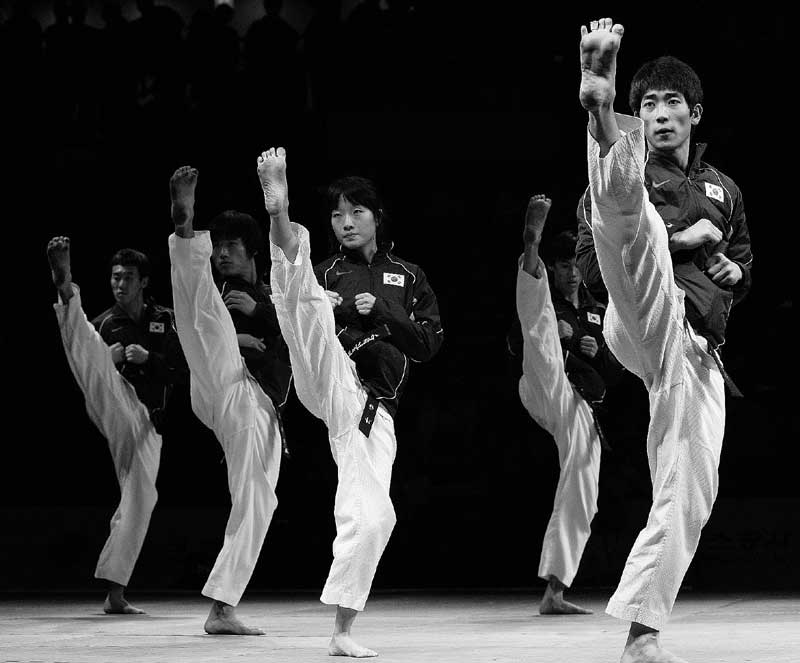| Taekwondo is a Korean martial art and the national sport of South Korea. It is the world's most popular martial art in terms of the number of practitioners. Gyeorugi, a type of sparring, has been an Olympic event since 2000. |
| In Korean, tae means "to strike or break with foot"; kwon means "to strike or break with fist"; and do means "way" or "method"; so "taekwondo" is loosely translated as "the way of the foot and fist" or "the way of kicking and punching". |
| Taekwondo's popularity has resulted in the varied development of the martial art into several domains: as with many other arts, it combines combat techniques, self-defense, sport, exercise, meditation and philosophy. Taekwondo is also used by the South Korean military as part of its training. |
| Formally, there are two main styles of taekwondo. One comes from the Kukkiwon, the source of the sparring system sihap gyeorugi which is now an event at the summer Olympic Games and which is governed by the World Taekwondo Federation (WTF). The other comes from the International Taekwondo Federation (ITF). There is also a more recent form called Songham Taekwondo or the American Taekwondo Association (ATA) and other variations of it such as STF (Songham Taekwondo Federation) and WTTU (World Traditional Taekwondo Union). |
| Separate from the various taekwondo organizations, there have been two general branches of taekwondo development: traditional and sport. The term "traditional taekwondo" typically refers to the martial art as it was established in the 1950s and 1960s; in particular, the names and symbolism of the traditional patterns often refer to elements of Korean history. Sport taekwondo has evolved in the decades since then and has a somewhat different focus, especially in terms of its emphasis on speed and competition (as in Olympic sparring), whereas traditional taekwondo tends to emphasize power and self-defense. The two are not mutually exclusive, and the distinctions between them are often blurred. |
| Although there are doctrinal and technical differences between the two main styles and among the various organizations, the art in general emphasizes kicks thrown from a mobile stance, employing the leg's greater reach and power (compared to the arm). The greatest difference between various styles, or at least the most obvious, is generally accepted to be the differing styles and rules of sport and competition. Taekwondo training generally includes a system of blocks, kicks, punches, and open-handed strikes and may also include various take-downs or sweeps, throws, and joint locks. Some taekwondo instructors also incorporate the use of pressure points, known as jiapsul, as well as grabbing self-defense techniques borrowed from other martial arts, such as Hapkido and Judo. |
13.12.2025
05:34







